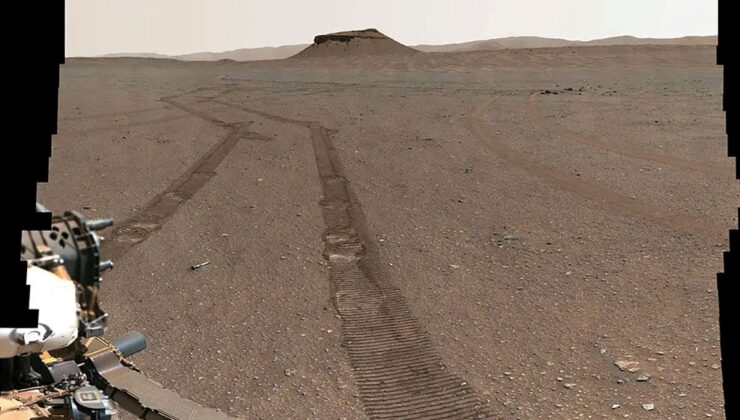

A recent breakthrough has shed light on the enigmatic black streaks adorning the Martian surface. These streaks, which sporadically appear and vanish, stretching across meters, have long puzzled scientists. Initially thought to be indicators of water, these markings might instead signal the activity of wind and dust on the Red Planet.
In the 1970s, the prevailing belief was that these features were linked to water. However, recent research challenges this notion. Adomas Valantinas, a postdoctoral researcher at Brown University, emphasizes the importance of understanding modern processes on Mars, stating, “Our research explored these features but uncovered no evidence indicating water. Our model supports dry formation processes.”
Valantinas, alongside Valentin Bickel from the University of Bern, co-authored a study published in Nature Communications. Their research involved employing a machine learning algorithm to catalog as many of Mars’ “mysterious” black streaks as possible. This endeavor produced a comprehensive map of Mars, highlighting approximately 500,000 black streaks from over 86,000 high-resolution images captured by NASA’s Mars Reconnaissance Orbiter.
The researchers juxtaposed this map with various databases and catalogs that included data on air temperature, wind speed, and rock slide activity. They meticulously searched for correlations in these extensive datasets.
Their findings revealed that these features, known as “recurrent slope lineae” (RSLs), which do not persist for decades, are not generally associated with water or ice indicators. Instead, they are more likely to emerge in regions with above-average wind speeds and dust accumulation.
Appearing during the warmest periods of the Martian year and subsequently “mysteriously” disappearing, the study highlights a dry process underlying their formation.
The researchers concluded that the ancient slope lines along rock faces and crater walls might have originated from dust cascading down slopes. This could occur due to shock waves from seismic activity, wind, or even meteoroid impacts.
SİGORTA
13 saat önceSİGORTA
13 saat önceSİGORTA
2 gün önceINSURANCE NEWS
2 gün önceSİGORTA
5 gün önceSİGORTA
5 gün önceSİGORTA
5 gün önceBES / HAYAT
6 gün önceSİGORTA
6 gün önceBİLGİ
7 gün önce 1
DJI Mini 5: A Leap Forward in Drone Technology
20577 kez okundu
1
DJI Mini 5: A Leap Forward in Drone Technology
20577 kez okundu
 2
xAI’s Grok Chatbot Introduces Memory Feature to Rival ChatGPT and Google Gemini
14550 kez okundu
2
xAI’s Grok Chatbot Introduces Memory Feature to Rival ChatGPT and Google Gemini
14550 kez okundu
 3
7 Essential Foods for Optimal Brain Health
13279 kez okundu
3
7 Essential Foods for Optimal Brain Health
13279 kez okundu
 4
Elon Musk’s Father: “Admiring Putin is Only Natural”
13111 kez okundu
4
Elon Musk’s Father: “Admiring Putin is Only Natural”
13111 kez okundu
 5
Minnesota’s Proposed Lifeline Auto Insurance Program
11016 kez okundu
5
Minnesota’s Proposed Lifeline Auto Insurance Program
11016 kez okundu
Sigorta Güncel Sigorta Şikayet Güvence Haber Hasar Onarım Insurance News Ajans Sigorta Sigorta Kampanya Sigorta Ajansı Sigorta Sondakika Insurance News